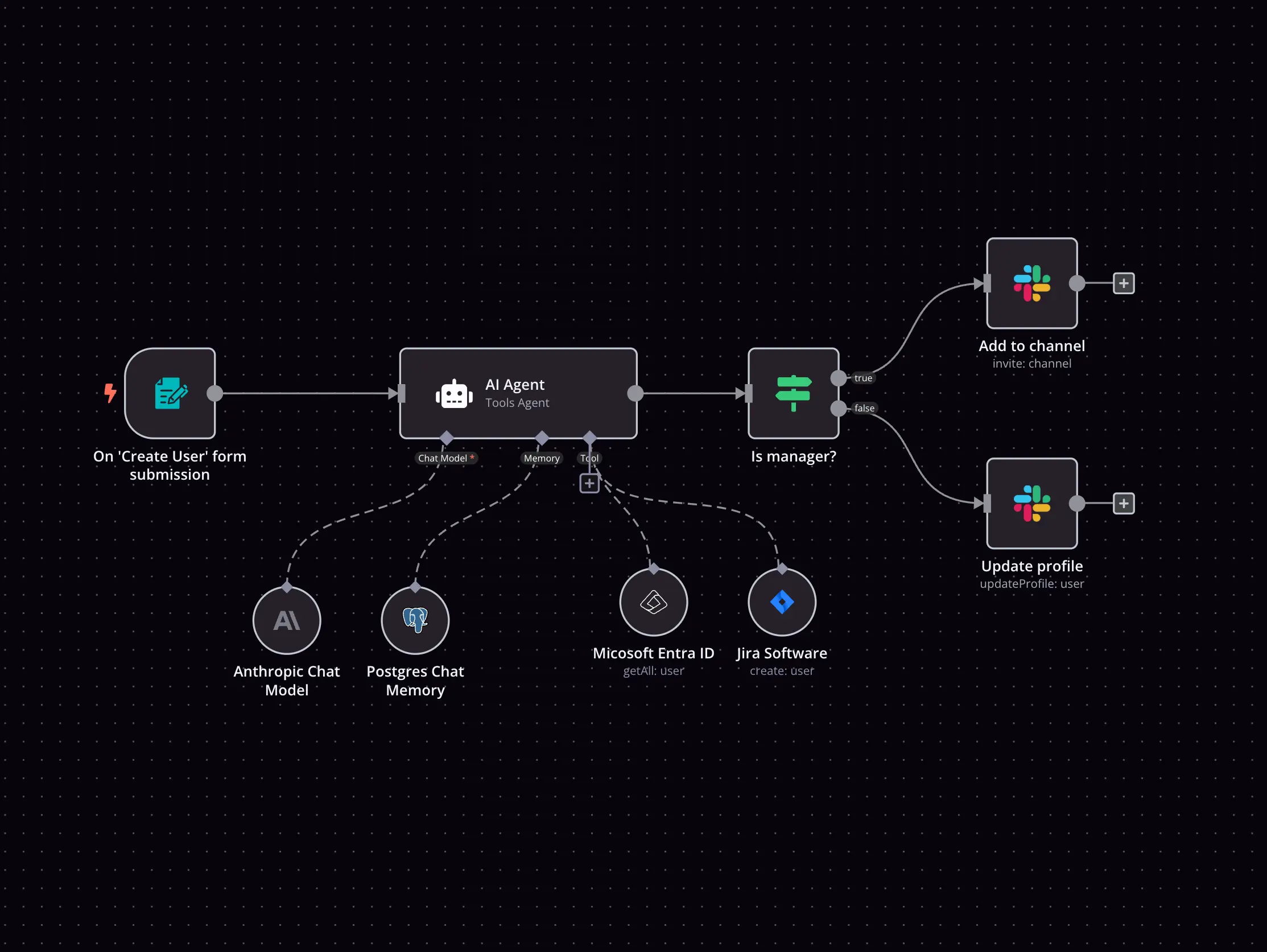F5 Big-IP and Trengo integration




How to connect F5 Big-IP and Trengo
Create a new workflow and add the first step
In n8n, click the "Add workflow" button in the Workflows tab to create a new workflow. Add the starting point – a trigger on when your workflow should run: an app event, a schedule, a webhook call, another workflow, an AI chat, or a manual trigger. Sometimes, the HTTP Request node might already serve as your starting point.
Build your own F5 Big-IP and Trengo integration
Create custom F5 Big-IP and Trengo workflows by choosing triggers and actions. Nodes come with global operations and settings, as well as app-specific parameters that can be configured. You can also use the HTTP Request node to query data from any app or service with a REST API.
Supported API Endpoints for F5 Big-IP
Get Virtual Servers
Fetches a list of all virtual servers.
Create Virtual Server
Creates a new virtual server.
Get Virtual Server
Fetches a specific virtual server by ID.
Update Virtual Server
Updates a specific virtual server by ID.
Delete Virtual Server
Deletes a specific virtual server by ID.
Get Pools
Fetches a list of all pools.
Create Pool
Creates a new pool.
Get Pool
Fetches a specific pool by ID.
Update Pool
Updates a specific pool by ID.
Delete Pool
Deletes a specific pool by ID.
Get Nodes
Fetches a list of all nodes.
Create Node
Creates a new node.
Get Node
Fetches a specific node by ID.
Update Node
Updates a specific node by ID.
Delete Node
Deletes a specific node by ID.
Get Monitors
Fetches a list of all monitors.
Create Monitor
Creates a new monitor.
Get Monitor
Fetches a specific monitor by ID.
Update Monitor
Updates a specific monitor by ID.
Delete Monitor
Deletes a specific monitor by ID.
To set up F5 Big-IP integration, add the HTTP Request node to your workflow canvas and authenticate it using a predefined credential type. This allows you to perform custom operations, without additional authentication setup. The HTTP Request node makes custom API calls to F5 Big-IP to query the data you need using the URLs you provide.
See the example hereThese API endpoints were generated using n8n
n8n AI workflow transforms web scraping into an intelligent, AI-powered knowledge extraction system that uses vector embeddings to semantically analyze, chunk, store, and retrieve the most relevant API documentation from web pages. Remember to check the F5 Big-IP official documentation to get a full list of all API endpoints and verify the scraped ones!
Supported API Endpoints for Trengo
List all tickets
Retrieve a list of all tickets.
Create a ticket
Create a new ticket in the system.
Assign a ticket
Assign an existing ticket to a user.
Close a ticket
Close an existing ticket.
Reopen a ticket
Reopen a previously closed ticket.
List all messages
Retrieve a list of all messages associated with tickets.
Delete a ticket
Remove a specific ticket.
List all tickets
Retrieve a list of all tickets.
Assign ticket
Assign a ticket to a user.
Close ticket
Close an existing ticket.
Reopen ticket
Reopen a previously closed ticket.
Delete ticket
Delete a specific ticket.
List contacts
Retrieve a list of all contacts.
Create a contact
Create a new contact in the system.
Delete a contact
Remove a specific contact.
List contacts
Retrieve a list of all contacts.
Create a profile
Create a new profile in the system.
List profiles
Retrieve a list of all profiles.
List profiles
Retrieve a list of all profiles.
Import text message
Import a text message into the system.
List all voip calls
Retrieve a list of all VoIP calls made.
Get a voip call
This endpoint retrieves details of a specific voip call.
List all help centers
Retrieve a list of all help centers available.
Create a help center
This endpoint creates a new help center.
List all quick replies
Retrieve a list of all quick replies created.
Create a quick reply
This endpoint creates a new quick reply.
List all labels
Retrieve a list of all labels.
Create a label
Create a new label.
Delete a label
Remove a specific label.
List all users
Retrieve a list of all users.
Create a user
This endpoint creates a new user.
Create a category
This endpoint creates a new category.
Get category
Retrieve a specific category.
Update category
Update an existing category.
Create an article
This endpoint creates a new article.
List articles
Retrieve a list of all articles.
Get article
Retrieve a specific article.
Update article
Update an existing article.
Create a custom field
This endpoint creates a new custom field.
Create a webhook
This endpoint creates a new webhook.
List all webhooks
Retrieve a list of all webhooks set up in the system.
Create a ticket result
This endpoint creates a new ticket result.
Create a contact group
This endpoint creates a new contact group.
Create a team
This endpoint creates a new team.
Send a message
This endpoint sends a message.
List all help centers
Retrieve a list of all help centers.
Get help center
Retrieve a specific help center.
Update help center
Update an existing help center.
List blocks
Retrieve a list of all blocks.
Get block
Retrieve a specific block.
Create block
Create a new block.
Create section
Create a new section.
Update section
Update an existing section.
To set up Trengo integration, add the HTTP Request node to your workflow canvas and authenticate it using a generic authentication method. The HTTP Request node makes custom API calls to Trengo to query the data you need using the API endpoint URLs you provide.
These API endpoints were generated using n8n
n8n AI workflow transforms web scraping into an intelligent, AI-powered knowledge extraction system that uses vector embeddings to semantically analyze, chunk, store, and retrieve the most relevant API documentation from web pages. Remember to check the Trengo official documentation to get a full list of all API endpoints and verify the scraped ones!
F5 Big-IP and Trengo integration details
FAQ
Can F5 Big-IP connect with Trengo?
Can I use F5 Big-IP’s API with n8n?
Can I use Trengo’s API with n8n?
Is n8n secure for integrating F5 Big-IP and Trengo?
How to get started with F5 Big-IP and Trengo integration in n8n.io?
Looking to integrate F5 Big-IP and Trengo in your company?
The world's most popular workflow automation platform for technical teams including
Why use n8n to integrate F5 Big-IP with Trengo
Build complex workflows, really fast
